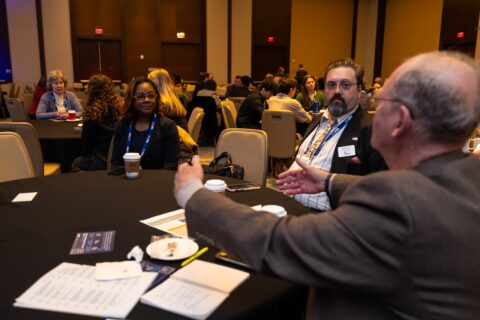Talent management is a highly effective, strategic approach to organizational culture. Attracting and retaining qualified employees while planning for the continuity of operations amidst an ever-changing environment in the wake of COVID-19 is not an easy task, especially for city administrations across the country. Bureaucratic practices often hinder local government agencies from using newer, more effective talent management strategies that are common in the private sector. Since city HR employees are required to work within their legislative parameters, their HR teams must continually find creative ways to attract and retain their diverse personnel.
Implementing talent management within your office can seem overwhelming, and although there is not a one-size-fits-all solution, here are five strategies that can increase your city’s success in these challenging times:
- Rethink your job descriptions.
Consider that the job title and description will be a new hire’s first impression of the company, and it will dictate the employee’s level of engagement once they’re on the job. While they should still be an accurate description of the position, they should also be descriptive and concise, rather than a long list of tasks that may not be part of the employee’s daily routine. Try to focus on the results you’d like the employee to be able to accomplish.
- Focus on communication and employee buy-in.
Set clear goals for the employee, the department, and the city administration as a whole. Employees need to know how their work relates to the city’s goals. Ask questions to find out what motivates your team and be consistent in your messages. It’s critical that local governments understand how potential candidates and employees view them, and if necessary, find ways to boost those perceptions because they can lead to more engaged and active employees.
- Update your recruiting process.
The talent pools recruiters have historically tapped are becoming outmoded. Traditional recruiting processes still place an emphasis on certain types of education, experience, or personal referrals, which can lead to a homogenous workforce. They can also unintentionally overlook the talented candidates in other city departments. Placing less emphasis on academic degrees, certifications, and looking beyond traditional talent pools can lead to more diverse internal and external candidates. Highly qualified candidates can be found outside traditional talent clusters; more and more people are acquiring critical skills informally on the job and in nontraditional educational programs, such as NASPO’s Procurement U Courses.
- Promote professional development to encourage an environment of growth.
Encourage professional development opportunities. Employees will be more likely to be productive and loyal if they know for certain that there are opportunities for them to progress if they so choose. While employees with long tenures are valued, the thinking is that if a worker is materially doing the same job for more than 3 to 5 years, they may not be growing in their role or building new competencies. It is also a good idea to create internal mentoring programs where seasoned employees can assist new hires.
- Find alternative ways to recognize employees for their hard work and commitment.
Make saying “thank you” and positive feedback common practices within your workplace. Candidates and employees want to know for certain that they are valued in a real and tangible way. Increase responsibility and trust after a job well-done and reframe failure as an opportunity for learning. Be sincere in your recognition efforts. Avoid generic tactics and adapt your methods to the individual.
About the Author
Telice Gillom is the Procurement Content Manager at NASPO.








